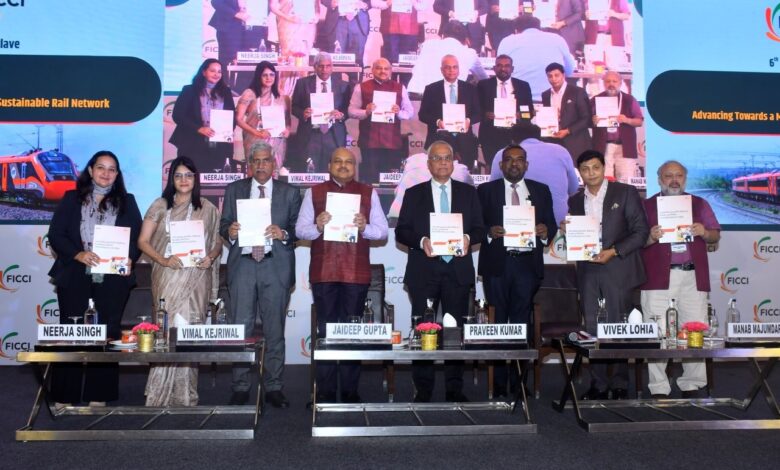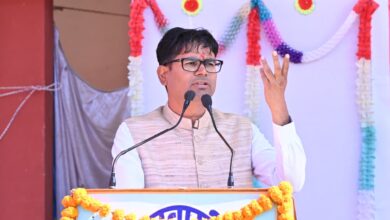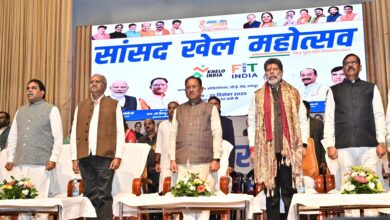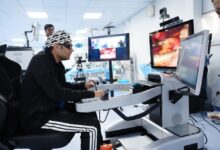DFCCIL showcases comprehensive digital transformation as freight corridors transform India’s logistics landscape

New Delhi, 10 July 2025: Speaking at the sixth edition of the FICCI’s Smart Railways Conclave, Future Rail India, Mr Praveen Kumar, Managing Director of DFCCIL, showcased a comprehensive digital transformation across the network. He revealed that the corporation has constructed infrastructure incorporating 2×25 high-rise overhead equipment and continuous welded rails designed for 32.5-tonne axle loads, representing India’s most advanced railway infrastructure. Kumar highlighted the corporation’s state-of-the-art control centres at Prayagraj and Ahmedabad, along with comprehensive digital innovations including AI-based inspection systems, predictive maintenance technologies, and the Kawach collision avoidance system deployment.
“Our engineering specifications enable trains to operate at 45-55 kilometres per hour compared to conventional railways’ 20-23 kilometres per hour,” Kumar stated.
On occasion, Mr Shantanu Roy, Chairman and Managing Director, BEML Limited, the state-owned engineering corporation, announced significant progress in indigenous high-speed train manufacturing. He revealed that the company’s first driverless metro trainsets for the Bangalore Metro are 50 per cent complete, with delivery expected by the end of the financial year 25-26. BEML’s order book includes the development of India’s first indigenous Vande Bharat sleeper trains, which feature capabilities of 180 kilometres per hour and advanced fire safety compliance. The company’s new Bhopal facility will double its manufacturing capacity, supporting high-speed rail projects while maintaining a 65 per cent indigenous content in metro coach production, directly contributing to the Atmanirbhar Bharat initiative.
In a landmark achievement marking the centenary of railway electrification in India, Mr Jaideep Gupta, Additional Member (Railway Electrification), announced that Indian Railways has become the world’s only major railway network to achieve 100 per cent electrification. This transformation reduces carbon emissions from 101 grams per tonne-kilometre by road to virtually zero through electric traction, positioning railways as the most sustainable transport mode after waterways. Indian Railway is pioneering green corridor initiatives for international freight traffic and exploring advanced technologies, including small modular reactors (SMRs) for traction substations, and flywheel energy storage systems to achieve complete carbon neutrality across all operational scopes.
Private sector participation is accelerating technological advancements, with Jupiter Wagons Limited committing over 3000 crores in investment over the next three years. Mr Vivek Lohia, Co-Chairman of FICCI’s Transport Infrastructure Committee and Managing Director, Jupiter Wagons Limited, highlighted the company’s ambitious plan to manufacture 100,000 wheels and axles annually, eliminating import dependency whilst positioning India as a global exporter. The company is pioneering advanced braking systems through European partnerships and developing indigenous Hyperloop technology. This collaborative ecosystem, featuring established players alongside startups and academic institutions, reflects the sector’s transformation from isolated project implementation to integrated, solution-focused development under the National Rail Plan 2030 framework.
Mr Vimal Kejriwal, Chairman of FICCI’s Transport Infrastructure Committee and Managing Director & CEO, KEC International, noted that with over 40,000 kilometres already electrified and the Kawach collision avoidance system is set to be deployed across 17,000 kilometres in FY26, with 30,000 kilometres planned for FY27 & FY28, India is positioning itself as a global railway powerhouse. The sector targets a 45 per cent modal freight share, while the railway market is projected to grow at a 5.5 per cent compound annual rate through 2030. Enhanced public-private collaboration in rolling stock manufacturing, multimodal logistics, and green propulsion technologies remains critical for achieving these ambitious infrastructure goals.







